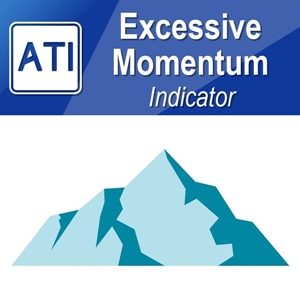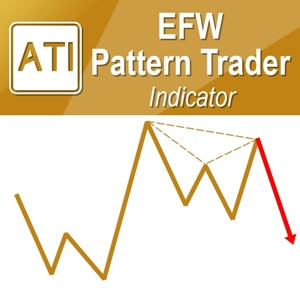Strength at Origin in Supply Demand Zone
Strength at Origin is a concept often discussed in technical analysis, particularly within the framework of supply and demand zones. Supply and demand zones are areas on a price chart where significant buying or selling activity has occurred, often leading to future price reactions when prices revisit those zones.
Strength at Origin refers to the level of buying or selling pressure present at the creation of a supply or demand zone. In simpler terms, it assesses how strong the market participants’ interest was when the zone was formed.
- Strength at Origin in Supply Zones: In a supply zone, there was a surplus of sellers relative to buyers, causing the price to decline sharply. The strength at origin in a supply zone indicates the intensity of selling pressure when the zone was formed. The stronger the selling pressure, the more likely it is that the supply zone will hold in the future as a resistance level when price revisits it.
- Strength at Origin in Demand Zones: In a demand zone, there was a surplus of buyers relative to sellers, causing the price to rally strongly. The strength at origin in a demand zone indicates the intensity of buying pressure when the zone was formed. The stronger the buying pressure, the more likely it is that the demand zone will hold in the future as a support level when price revisits it.
Analyzing the strength at origin helps traders gauge the significance of supply and demand zones. Stronger zones are those where the imbalance between buyers and sellers was more pronounced when the zone was formed, making them more likely to influence future price action.
Traders often use various technical tools and indicators, such as volume analysis, candlestick patterns, and price action, to assess the strength at origin in supply and demand zones. By understanding the strength at origin, traders can make more informed decisions about potential entry and exit points, as well as managing risk effectively.
Next we will talk about the market cycle, whose nature is irregular and often deceive the Forex and Stock trader. Then we will cover how to ride the wave of the market cycle using the trading strategy with supply demand zone. Trading is practical. We trade to make the profits from our trading. Hence, if you are a trader, the most important question to ask is “How do you make profits by trading?”. Say that you and your friend bought the same stock. However, your result can be completely different from your friend. Even if both of you bought the same stock, you could still lose money whereas your friend made money. What makes the difference between you and your friend? It is the entry timing. In another words, the most important factor behind the successful trading is to know the best entry in our trading. This timing question is something that every trader should and must ask. In fact, we can formulate the answer to this question from the market cycle point of view. The simple answer is that this image can visualize such a winning opportunity.
Say that EURUSD or Bitcoin have the large cycle and small cycle. Your best buy opportunity will be in the area where both small and large cycles are boosted together shown as the dotted line in the image. That is the thin intersection where both short term trader and long term trader are jumping in together. However, this is where most of average traders are stop thinking beyond. There is one problem in this image although its concept is perfectly sound. The problem is that the market does not have the regular cycle, which we can track its peak and trough with fixed time interval as in the sine curve of the Physics text book. Hence, this image is only educational to conceptualize the best buy entry. If it was like that, the money making in Forex or Stock market would have been so much easier buying EURUSD on Monday low and selling at Friday high something like this or similar. In fact, what makes us hard is that the market cycle is not regular but it is stochastic.
Market cycle is irregular. Sometimes, price moves in slow cycle and sometimes price moves in fast cycle. Sometimes price swings around big amplitude and sometimes price swings around only small amplitude. It is the observations we can make every day in Forex and Stock market, the fuzzy and dirty cycles instead of the clean sine curve. Hence, any technical analysis that does not consider this uneven and rough surface of the market is not effective to predict the market.
The good news is that understanding the fractal wave can help us to predict the market tremendously. It is because fractal wave is the tool that is theoretically designed to work with price data with many uneven cycles. Unlike the fractal wave, many other tools will suffer more with more number of uneven cycles in the price data, for example, like the normal distribution and other cyclic methods designed to operate with regular cycles. Hence, fractal wave is the best tool to predict the fuzzy and dirty cycles in Forex and Stock market. Theoretically, it is one of the best tool to model stochastic cycles in the Forex and Stock market too. The peak trough analysis is the important first step as it visualizes the fuzzy and dirty cycles in the readable form for us. Therefore, the technical analysis making good use of this peak trough analysis is the important tool to predict the market.
Now going back to the entry timing question, how can we catch the moment where the small and large cycles are boosted together using the technical analysis? Although the technical analysis is the good tool to predict the stochastic cycle, it still does not imply that they are designed to capture the multiple cycles. In fact, the answer is pretty straightforward. Catching the timing where the small and large cycles are boosted together can be done by combining two or more techniques to gauge your entry instead of just using one single technique. Combining two or more technical analysis is a good trading strategy as in practice we might need to capture the intersection for more than two cycles. Technically speaking, when you use multiple techniques, you have a high chance to capture the best entry.
In addition, using two or more chart timeframe could add some value to improve your trading performance too. Good mixture of the technical analysis and the chart timeframe will yield the fruitful results. Hence, if you want to become a successful trader, then training and practice are a must requirement. Here is one final note. As the market consists of the probabilistic cycles, your outcome is not going to be bullet proof. Therefore, you should trade with the high probability setup. You need to understand that trading is about quality and not about quantity. In addition, identifying the best sell entry is exactly the same as identifying the best buy entry. We just need to look for the intersection where both small and large cycles are falling together using the two or more technical analysis.
I introduced the supply and demand analysis for two reasons. Firstly, the supply and demand analysis is simple and straightforward. There is nothing wrong with simple strategy as long as they are effective. Secondly, this is another trading strategy to predict the fractal wave in Forex and Stock market. In another words, this trading strategy is a good demonstration on how to predict fractal wave (i.e. market cycle) for the starter using the peak trough analysis.
Supply and demand analysis is comparable to support and resistance. Broadly speaking, supply and demand analysis can be considered as the support and resistance up to some extent. However, there are some differences between them. Firstly, support and resistance on their own are more or less volatility prediction tool. In another words, they predict the price level with potential high volatility. However, supply and demand analysis with the pattern recognition provides the direction to trade. For example, depending on the price pattern, the supply and demand analysis predicts the bullish or bearish movement. Secondly, support and resistance use the line whereas the supply and demand analysis use the key area, which is the price range between two prices. In spite of these two differences, there are some cases where supply and demand zone are formed in the similar way as the support and resistance. Hence, there could be some theoretical debate on using the supply and demand analysis as the support and resistance.
Ace Supply Demand Zone indicator is non repainting Supply Demand zone indicator. You can consider it as the advanced support and resistance indicator too. Strength at Origin input is an important input for supply and demand zone. This input can be selected between 1 and 10. Strength at Origin 1 is less significant and 10 is more significant in relative term. But this is only rough guide line about Strength at Origin input for supply and demand zone trading. We also provide the screenshot of how to do it in your chart. We hope this article is useful.
In addition, we provide the YouTube video for Ace Supply Demand Zone Indicator. In terms of indicator operation, both mean reversion supply demand and ace supply demand zone indicator are similar. Hence, you can watch this YouTube Video to learn the basic operation with the supply demand zone indicator.
YouTube “Supply Demand Zone Indicator”: https://youtu.be/lr0dthrU9jo
Below is link to Ace Supply Demand Zone Indicator.
https://www.mql5.com/en/market/product/40076
https://www.mql5.com/en/market/product/40075
https://algotrading-investment.com/portfolio-item/ace-supply-demand-zone/
Related Products







